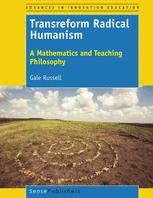

Most ebook files are in PDF format, so you can easily read them using various software such as Foxit Reader or directly on the Google Chrome browser.
Some ebook files are released by publishers in other formats such as .awz, .mobi, .epub, .fb2, etc. You may need to install specific software to read these formats on mobile/PC, such as Calibre.
Please read the tutorial at this link: https://ebookbell.com/faq
We offer FREE conversion to the popular formats you request; however, this may take some time. Therefore, right after payment, please email us, and we will try to provide the service as quickly as possible.
For some exceptional file formats or broken links (if any), please refrain from opening any disputes. Instead, email us first, and we will try to assist within a maximum of 6 hours.
EbookBell Team

4.7
56 reviewsIn Transreform Radical Humanism: A Mathematics and Teaching Philosophy, a methodological collage of auto/ethnography, Gadamerian hermeneutics, and grounded theory is used to analyze a diverse collection of data: the author’s evolving relationship with mathematics; the philosophies of mathematics; the “math wars”; the achievement gap for Indigenous students in mathematics and some of the lessons learned from ethnomathematics; and risk education as an emerging topic within mathematics curricula. Foundational to this analysis is a new theoretical framework that envelops an Indigenous worldview and the Traditional Western worldview, acting as a pair of voices (and lenses) that speak to the points of tension, conflict, and possibility found throughout the data. This analysis of the data sets results in the emergence of a new theory, the Transreform Approach to the teaching and learning of mathematics, and in the transreform radical humanistic philosophy of mathematics. Within these pages, mathematics, the teaching and learning of mathematics, hegemony, and the valuing of different kinds of knowledge and ways of knowing collide, sometimes merge, and most frequently become transformed in ways that hold promise for students, teachers, society, and even mathematics itself. As the assumed incommensurability of worldviews is challenged, so too new possibilities emerge. It is hoped that readers will not just read this work, but engage with it, exploring the kinds of knowledge and ways of knowing that they value within mathematics and the teaching and learning of mathematics and why.